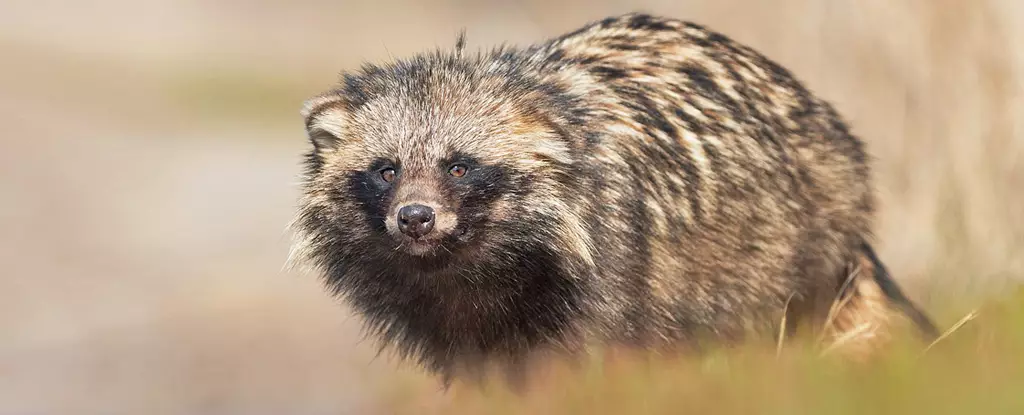The emergence of COVID-19 has sparked global discourse regarding its origins, and new research efforts continue to shed light on the specifics of how the pandemic began. A significant study has implicated certain wildlife species as potential intermediaries in the transmission of the virus to humans, particularly highlighting the role of the Huanan seafood market in Wuhan, China. This article explores the findings of this research, discussing its implications for understanding zoonotic spillovers and the ongoing quest to prevent future pandemics.
The Huanan seafood market in Wuhan has been a focal point in the investigation of COVID-19’s origins. Since late 2019, when reports first began to surface about a respiratory illness in the city, researchers have sought to establish a clear connection between the market and the emergence of SARS-CoV-2. The recent study, leveraging metagenomic RNA data collected immediately after the market’s closure, further supports evidence that the virus likely made its jump to humans from specific animal species found in that environment.
Researchers from the Chinese Center for Disease Control and Prevention (CDC) conducted an extensive sampling effort in early 2020, shortly after the market’s shutdown. Despite the absence of animals at the time, they collected samples from various surfaces, cages, and environmental reservoirs. The resultant dataset, which contains over 800 samples, has proved invaluable for subsequent analyses of potential animal reservoirs and the epidemiological pathways that led to human infection.
The latest findings from evolutionary biologist Florence Débarre and her team indicate that raccoon dogs and civets may have played critical roles in transmitting SARS-CoV-2 to humans. Genetic markers associated with these species were detected alongside viral RNA, providing compelling evidence that these animals could have acted as intermediary hosts. The suggestion that raccoon dogs, in particular, were genetically abundant in the environment is significant, considering their historical association with SARS outbreaks in 2002.
While the researchers acknowledge that their study cannot definitively prove that these animals were infected with SARS-CoV-2—given they may have been removed before samples were taken—the presence of genetic material raises suspicion about the likelihood of these mammals hosting or carrying the virus. This elicits profound concerns regarding wildlife trade practices and the proximity of humans to species known to harbor zoonotic viruses.
The theory that the virus may have leaked from a laboratory, particularly the Wuhan Institute of Virology (WIV), has fueled speculation since the onset of the pandemic. Although the new study reinforces evidence that SARS-CoV-2 emerged from wild animal hosts, the coincidental timing and geography of the outbreak and the WIV have kept the lab leak theory alive in public discourse.
The notion of a lab-associated release, while highly conspiratorial, highlights the urgent need for transparency and rigorous safety protocols in virology research. As noted by various scientists, the broader lesson from the pandemic involves the relationship between humans, animals, and the underlying risks of zoonotic transmission occurring when wildlife is brought into close proximity with human populations.
The latest research not only enhances our comprehension of the origin of COVID-19 but also emphasizes the significance of understanding zoonotic diseases at large. The investigators assert that their findings contribute to a growing body of evidence suggesting that infected animals were introduced into the market around November 2019. This information proves crucial not just for historical analyses but also for developing and implementing preventive measures.
The authors argue that despite increased focus on safety protocols within laboratories since the pandemic began, the risks associated with zoonotic spillover from wildlife remains under-addressed. Michael Worobey, an ecologist from the University of Arizona, articulates that human behaviors must change to mitigate the chances of similar outbreaks. As globalization and urbanization continue, fostering environments where animals known to harbor viral pathogens are kept in proximity to humans creates conditions ripe for disease transmission.
As the studies surrounding COVID-19’s origins evolve, they underscore the complexity of this pandemic and reflect a vital step toward understanding how future outbreaks can be prevented. Identifying potential animal reservoirs, such as raccoon dogs and civets, is crucial for anticipating and mitigating the risk of zoonotic diseases. The intersection of wildlife, human habitats, and consumer behavior warrants further investigation and intervention, emphasizing the importance of not just understanding past crises but actively shaping a more secure future for public health.

